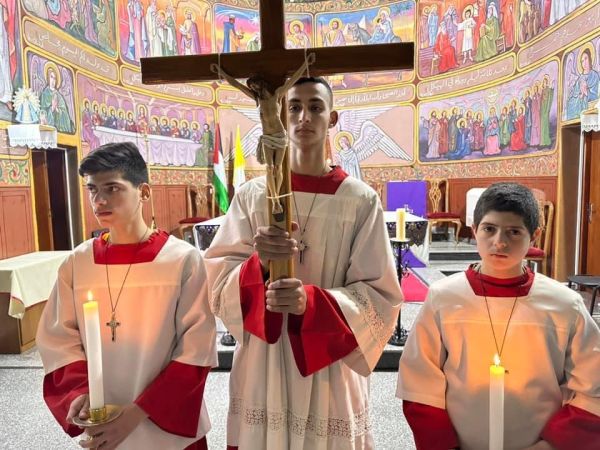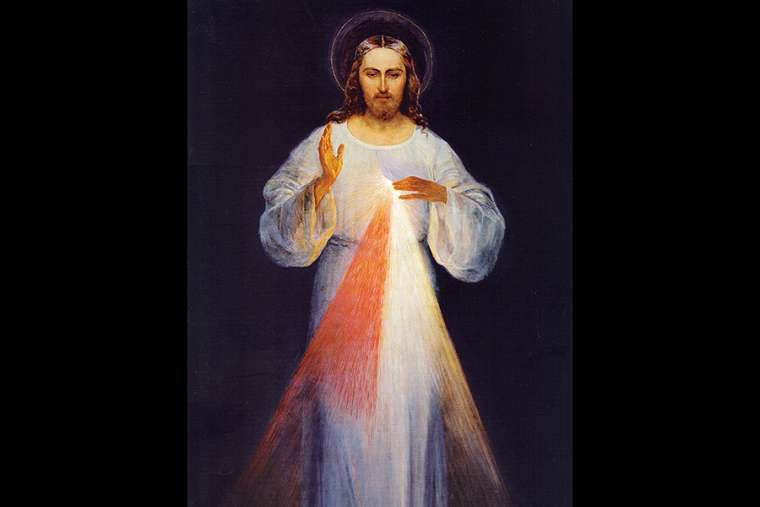
By Marinella Bandini – Jerusalem, Mar 11, 2024 / 06:00 am – Catholic News Agency
Five months ago in Gaza City, 18-year-old Suhail Shadi Abu Dawod was waiting for a visa for Italy to begin his novitiate in the Institute of the Incarnate Word (IVE) — and then the Israel-Hamas war broke out.
“I began considering joining the Incarnate Word congregation in 2021, when I was 15 years old,” Abu Dawod told CNA through his pastor, Father Gabriel Romanelli. “I wish to join it because it is a simple and humble congregation that spreads the message of love, spirituality, praying the rosary, and faith worldwide.”
Abu Dawod is a postulant of the institute. He is following in the footsteps of both priests at his parish who are part of the IVE.
“When the war started and interrupted my journey, I felt deep sadness and disappointment. However, I came to realize that God is preparing a significant gift for me and for the development of my vocation. It is part of God’s plan. I trust in God’s guidance, and I firmly believe in his grace for me,” he said.
Like hundreds of other Christians in Gaza, Abu Dawod and his family left their home and have been living within the premises of the Latin Parish of the Holy Family in northern Gaza for the past five months.
“Feeling blessed in the midst of war” or “faith is stronger than war” are some of the thoughts that Abu Dawod shares on Facebook from time to time.
“I really feel blessed,” he told CNA, “as I witness all the people attending and praying in the holy Mass, united together with one heart, especially on the occasion of the Christmas feast, celebrating the birth of Jesus!”
Every day, the postulant participates in the Mass as an altar server and takes care of the younger ones. He also helps in the production of sacramental hosts in a “makeshift” factory. He is part of the scout group, plays soccer, and is learning to play the bagpipes. The violence and death all around have not shaken his faith, but have, he says, strengthened it.
“My faith is flourishing amidst the challenges of war, growing day by day through daily rosary prayers, reading the life stories of saints, and, most importantly, meditating every Sunday in front of the body of Christ. Jesus, being the source of my faith, is the foundation on which I place all my trust,” he said.
Abu Dawod said he has also enriched his vocation by working as a volunteer at Mother Teresa’s charity within the parish, serving children with disabilities and those in need who live there.
“I initiated writing a diary during my service, and through this journey I have witnessed improvement in my spirituality, which is of utmost importance,” he said.
During these very difficult months, Abu Dawod has learned that “God always has mercy on us” and “God is with us, he will never abandon us in this difficult situation.”
Christians in Gaza have consistently refused to leave their parish and head to southern Gaza, despite the threat of attacks and bombings. “We are like Noah’s Ark in the days of the flood,” members of the parish have told their pastor, Father Romanelli, who has been unable to return to the parish since the war broke out.
Those words, full of faith and hope, are similar to those of Abu Dawod.
“My Lord Jesus Christ always provides me with hope; he is the source of hope in my life. I stand as a sign of hope, enduring the challenges, difficulties, and pain during this perilous time of war,” he said.
Even now in Gaza, as food and water become increasingly scarce and hygiene conditions are at their limit, where many have died and even more struggle psychologically, this young man speaks words of faith and hope: “God has provided abundant and blessed gifts without any limits. He continues to supply us with the necessities that sustain our lives.”
“I’ve learned to be more patient, especially in the things I ask of God, recognizing that he has a plan for me and for the good things that will come my way. I have to wait for his glorious will to unfold,” he shared. “I’ve also learned to prioritize giving love rather than seeking to be loved, understanding that love is the key to spreading peace in the world — to love without limits.”
Now in the Lenten season, Abu Dawod said, “I am currently experiencing Lent in a different way than any other year before. I am praying more, reciting the holy rosary and attending holy Mass. I am fasting more, refraining from consuming things I used to enjoy, and extending forgiveness to others as this season calls for reconciliation.”
Even the word “resurrection,” seen from Gaza and amid the midst of war, has taken on a new meaning.
“It signifies that we are the children of God, not his slaves. It underscores his boundless love for us, surpassing any other,” Abu Dawod said. “He sent his only Son, Our Lord Jesus Christ, who triumphed over the devil and all the evil spirits in the world, winning over darkness and death.”
Abu Dawod has chosen to dedicate his time right now to serving Jesus as he prepares for Easter.
“I am purifying my heart, striving to remove any sins within it, all in anticipation of meeting King Jesus during the great feast of Easter. This feast serves as a poignant reminder of how Jesus sacrificed himself on the holy cross for the forgiveness of our sins. Through his glorious resurrection on the third day, he shattered the bonds of death.”
In the Holy Land, the very land where Jesus died and was resurrected, Abu Dawod prays for peace.
“We beseech God for peace, the same peace spread throughout the world at the time of Jesus’ resurrection,” he said. “My fervent prayers are dedicated to justice and the establishment of lasting peace in the Holy Land, particularly in our city of Gaza.”



